After touring Ca d’Zan, we headed into the Tibbals Learning Center and the Original Circus Museum. Learning Center? Ah-h-h, who wants to tour a learning center? Oh, but wait, there is a marvelous treasure in here - a huge miniature circus with:
42,143 items, not including tent pegs and ropes and other teensy tiny parts
8 large tents with poles
1500 workers and performers
7000 folding chairs - that actually fold
500 hand-carved animals
152 circus wagons
and dishes and tableware to serve 900 people
These can all be packed into the 55 railroad cars that have also been hand-crafted.
As we were walking in to see all this, another older gentleman walked in looking like a tourist in his plaid shirt and jeans. The guard leaned in to us and whispered that Mr. Tibbals was walking in. I rushed over and asked if he minded if ‘I took his picture. Or - are you on you way to something?’ ‘Sure, you can take my picture but I’m on my way to the bathroom.’ Oh, I’ll get your picture later.’ and he took off. I wandered in to see his miniatures and got so intrigued that by the time I got back out to the entry, he was long gone. All I got was this picture of a picture which shows him with a small miniature pail from his miniature circus.
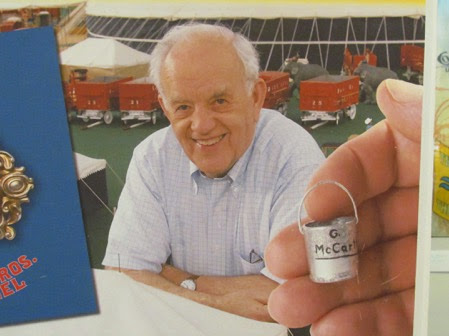
He’s an amazing man, just as John Ringling built a circus, so did Howard Tibbals - but his was much smaller at 3/4” to the foot. Born in 1936, the year that John Ringling died, he watched circuses perform from the age of 3 and became fascinated with them. For his 12th birthday, he was given a lathe and jigsaw and thus began his passion. He began with the big Top in 1956 and then a wagon out of balsa wood in 1959. He ‘completed’ most of it in 1974 and began to exhibit it in 1982 at the World’s Fair in Knoxville. He wanted to call it “The Ringling Bros. Barnum & Bailey Circus’ since that was the model he used but the Ringlings refused so he called it the Howard Circus. In 2004 he set up his circus in its current location at the Tibbals Learning Center. Here is also a full-scale model of his workshop.
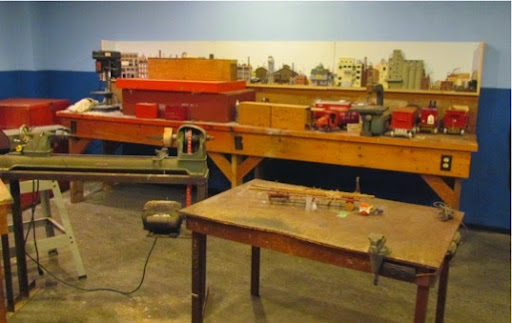
Is it all accurate? Absolutely. He collected almost one million photographs and measured historic wagons, train cars, and other circus equipment to construct his scale model. You can see open-air bathrooms, trapeze artists swinging through the air in the big top, butchers cutting up meat for the animals, an infirmary tent, every scene is accurate and, in its own way, tells a different part of the circus story. Inside the ticket taker’s wagon is a scale model cash register with scale model dollar bills and coins. Can you see these? Nope, but Tibbals knows that they are there and they are accurate.
Here’s a small section of the food tent for the circus people. Note the detail. All of the facial expressions, all of the characteristics, all of the clothing is different. There are knives, forks, spoons, salt and pepper shakers, plates, cups and saucers, benches on sawhorses, glasses - everything necessary to the feeding of a multitude.
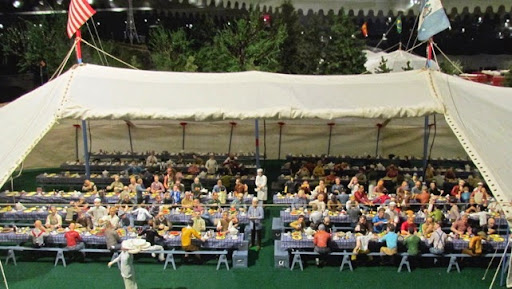
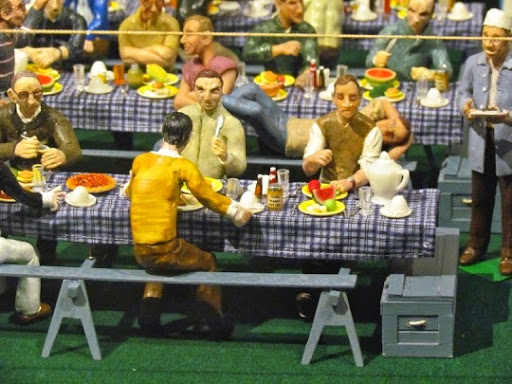
The perimeter of the model is approximately 450 feet, or the length of 1.5 football fields. The area is large enough to park 11 school busses. You can see open-air bathrooms, trapeze artists swinging through the air in the big top, to butchers cutting up meat for the animals, every scene is accurate and, in its own way, tells a different aspect of the circus story. The first question you ask as you walk around the 450’ perimeter of the model is: ‘Was the circus really this large? Were there really this many people?’ Yes and yes. In fact, Tibbals says that it should be bigger.’
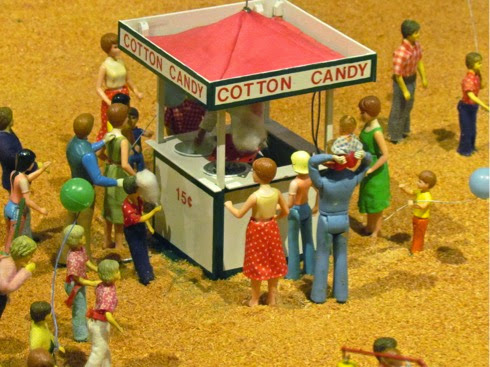
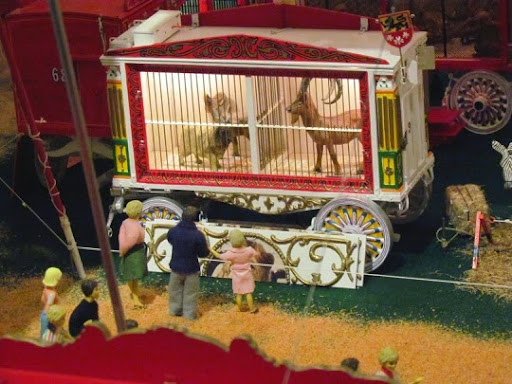
This is the scene inside the big top. The trapeze artists swing and the bareback rider swings around the circle.
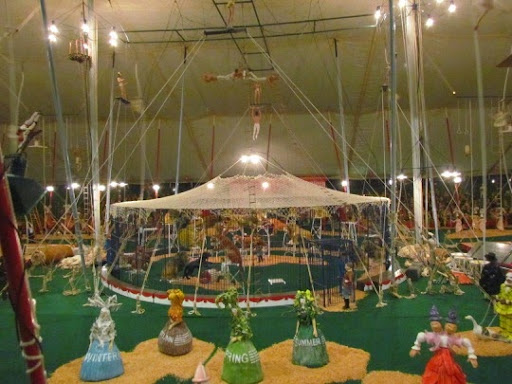
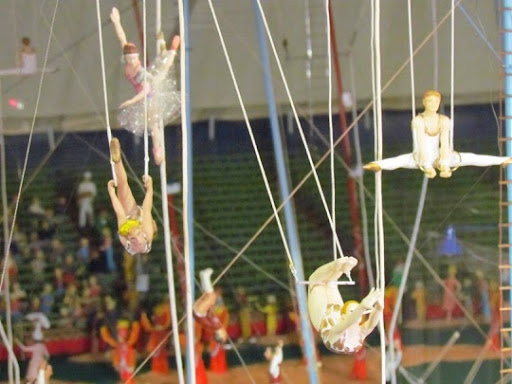
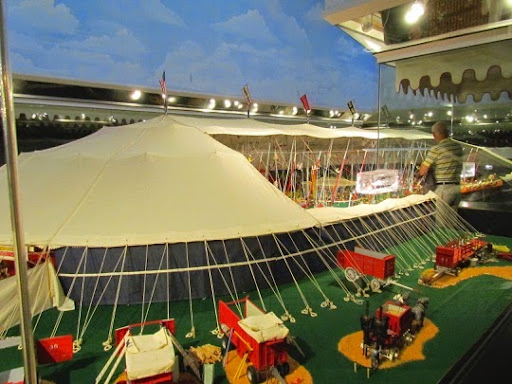
To say that Gary and I were fascinated by this miniature circus is an understatement. section showing how the circus unloaded the wagons from the trail. Note the guy leading the tongue of the wagon to ensure that it came straight down the ramps and the team of horses actually pulling it off the railroad cars with the ropes.
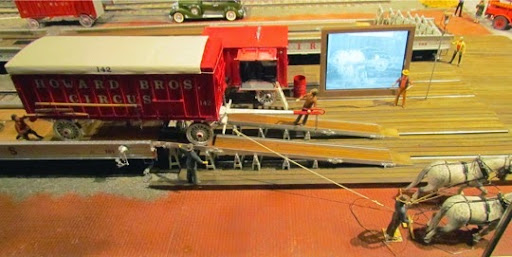
On the second is a wall devoted to circus history from the Romans to the current circuses traveling around the country. There are several small movie screens with pictures of elephants and giraffes walking off the railroad cars, lots of clowns making the crown laugh, trapeze artists swinging through the air. The museum, the miniature circus, the circus paraphernalia, the history and all the circus artifacts make this a fascinating museum.
If you are coming to Florida, make a side trip to stop at the Ringling - and allow more than a day. We actually left today at 4:45, after buying our 2nd day tickets so that we could return tomorrow to visit the Art Museum which we haven’t even looked at yet. .

No comments:
Post a Comment